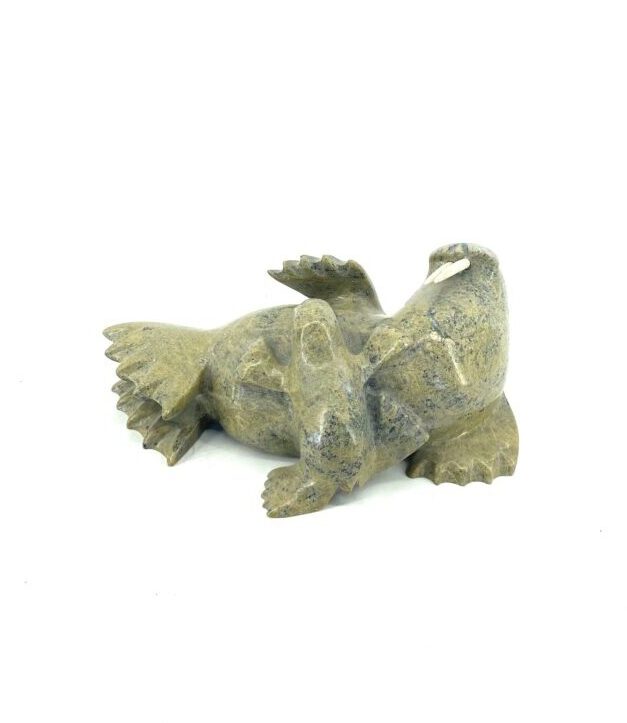Peter Parr

Born in Cape Dorset, Nunavut – 2012
Peter Parr was native to Cape Dorset, NU and was here where he learnt to carve. This endeavor was both responsible for the distinction of his becoming a world famous artist as well as the assertion of his eventual demise involving a tragic boating accident, leading to his death in 2012.
Like many young artists in Kingait, Parr began carving when he was a teenager. He started off with simple inukshuks, which quickly evolved into more sophisticated pieces such as dancing walruses and bears. It was his affiliation with these two creatures which earned him accolades and solitude in the chronicles of Inuit art.
His keen artistic background mostly emanates from his father – world famous Nuna Parr, and grandfather, the late Parr Parr; a famous graphic artists in Cape Dorset.The akin works between him and his father is analogous. You can see the palpable similarities and styles in their work. It is clear that Peter was under the apprenticeship of his father. Peter Parr’s popularity has risen in recent years and was believed to eventually follow in his father’s footsteps and become one of the world’s best Inuit artists.
His later works and ensembles are possibly unique in Parr’s oevre in that it strays from his more medium sized format of dancing bears. Parr is just as famous for his depiction of dancing bear as is the likes of other greats like Nuna Parr and Joe Kavik. He has created an impressive body of sculptures depicting walruses and other animals as well, but it is his affinity with the dancing bear that has captured the imagination of collectors.
Well respected as an artist, his works are held in several public collections including the National Gallery of Canada and the Winnipeg Art Gallery. His bears reveal the artist’s keen admiration and understanding of the animal’s form and movements.Parr has an uncanny ability to render both the massiveness and the quiet grace of the bear with surprising spirituality and form. The radical truncation of the bear’s body creates visual ambiguity.
His stylish dancing bears and walruses project a whimsical like balance between spirit and mammal that captivates a fluid motion like none other. The overall composition of his works are harmonious in nature with much joy and happiness etched into the facial features. This is consistent with his father’s teachings.
By this artist
No Results...
Sorry, there were no results found with these search parameters. Please reset and try again.
